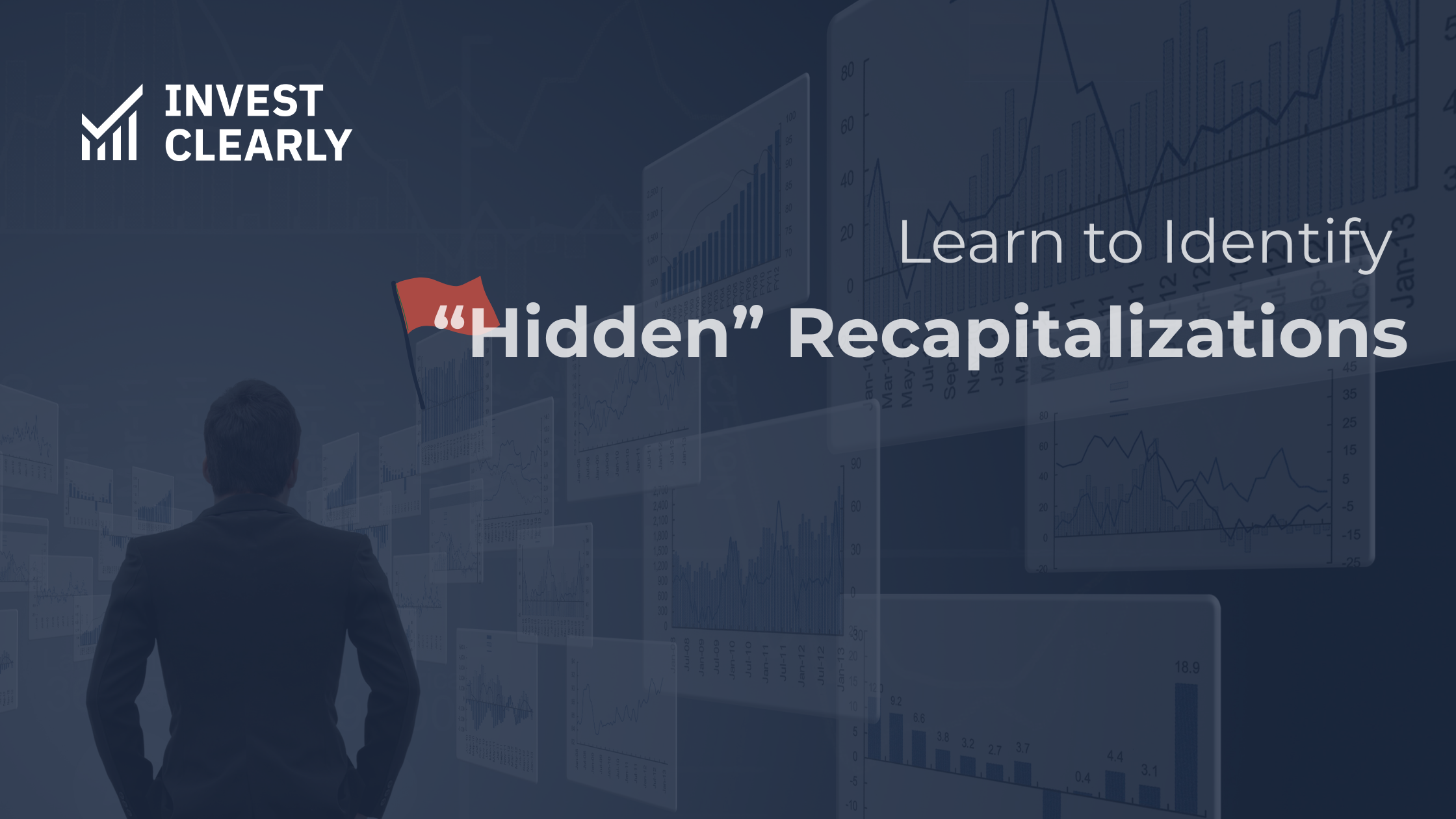
How Developers Mitigate Construction Risk to Protect Investors
Never miss an Invest Clearly Insights article
Subscribe to our newsletter today
Investing in multifamily development through a real estate syndication can be highly rewarding, but many passive investors wonder: What about construction risk? Delays, cost overruns, or unforeseen site conditions can feel intimidating if you’re new to the space.
The truth is, experienced developers use disciplined, proven methods to control risk and safeguard investor capital. They create systems that provide cost certainty, reduce delays, and ensure projects move from raw land to project completion as smoothly as possible.
This guide explains the most common risks in ground-up multifamily investing and how developers mitigate them to protect limited partners (LPs).
What Is Construction Risk in Real Estate Development?
Construction risk refers to the potential challenges that arise when building a project from the ground up. For investors, these risks can directly affect returns, since they influence project costs, timelines, and rental income potential.
Typical risks include:
- Delays in construction
- Cost overruns
- Market shifts during development
- Difficulty achieving projected rents or occupancy
- Regulatory or zoning hurdles
- Interest rate fluctuations
Developers cannot eliminate these risks completely, but they can significantly reduce these risks through contracts, planning, and conservative underwriting assumptions.

Why Risk Mitigation Matters for Passive Investors
When developers take risk management seriously, passive investors benefit. Key outcomes include:
- Protection from surprises through contingency budgets and reserves.
- Improved confidence in project delivery with consistent, trusted teams.
- Peace of mind knowing that developers have layered safeguards in place.
For LPs, understanding these strategies builds confidence that their capital is protected even in complex projects.
Key Risk Mitigation Strategies Developers Use
Successful multifamily development requires thoughtful protection against the many variables that can disrupt a project. Experienced developers use a range of risk mitigation strategies to control costs, safeguard timelines, and preserve investor capital. From contractual safeguards to conservative underwriting and market selection, these measures help ensure projects remain viable even when unexpected challenges arise.
Guaranteed Maximum Price (GMP) Contracts
One of the strongest tools for controlling costs is a guaranteed maximum price (GMP) contract with the general contractor. This agreement establishes a ceiling on construction costs. If construction costs rise due to the contractor’s errors, inefficiencies, or mismanagement, the general contractor must absorb those costs, not the developer
While a GMP provides strong protection, it does not eliminate all risk. Approved change orders, such as upgraded finishes, or hidden site conditions like soil issues can still increase costs.
However, even with these exceptions, GMPs remain one of the most effective ways to align the contractor’s interests with the developer’s, providing investors with contractual protection and cost certainty.
Building Contingencies and Reserves
In multifamily development, surprises can occur. Developers should budget strong contingencies for unforeseen costs and maintain operational reserves for lease-up. Typically, contingencies and reserves should be between 5%-10% of the total project cost, which can give limited partners confidence the developer has additional funds for any “what ifs”.
Additionally, some developers choose to leave a portion of their development fee in the project to act as contingency funds. For example, a developer may take ⅓ of the development fee at closing, but leave ⅔ of the fee in the project and be paid out only at successful milestones, if not used as a contingency. These layers of protection ensure that capital is available to handle challenges without impacting investor returns.
Long-Term Relationships with Trusted Teams
Consistency creates predictability. Developers who repeatedly work with the same construction firms, architects, and engineers build long-term relationships based on trust and accountability. These teams understand expectations, which leads to fewer mistakes and greater efficiency.
Investing in High-Growth Markets
Developers mitigate risk by selecting locations with strong fundamentals like population growth, rent growth, job creation, and supply constrained markets. By investing in markets with strong fundamentals, developers can significantly reduce exposure to downturns during the development period.
Conservative Rent and Occupancy Assumptions
Overly aggressive projections can create disappointment. Experienced developers rely on third-party market reports, property management insights, and comparable properties to conclude their rental rates and occupancy assumptions. Projected rental rates should align with other comparable properties in the market.
Additionally, developers who use organic rent growth projections between 2% - 3% annually in their underwriting models are taking the conservative approach (assuming the rental market is balanced). Potential investors should verify the developer is using conservative assumptions to help them understand if the deal has realistic assumptions or if the underwriting is too good to be true.
Fully Entitled Projects Before Raising Capital
Regulatory risk can derail projects. To protect investors, developers secure zoning, permits, and approvals before raising equity capital. This ensures projects are shovel-ready and avoids the risk of spending upfront funds on deals that fail to receive approval.
However, each project is different and limited partners should verify where in the process the developer is before investing.
Accounting for Interest Rate Fluctuations
Interest rates can shift between planning and closing. Developers model deals with buffer percentages in underwriting to ensure projects remain financially sound even if borrowing costs rise.
Depending on the project, it would be beneficial for developers to budget between 6 - 18 months of interest reserve. These are funds set aside to ensure the developer can pay the debt service, while the project is leasing up.

Overview: How LPs Can Verify Developers Mitigate Construction Risk
- GMP Contracts: Ask the developer and confirm the project has a guaranteed maximum price contract with the general contractor.
- Contingencies & Reserves: Verify the developer budgeted 5–10% of total project costs for contingencies and operating reserves. Ask if and how much of the developer’s fee stays in the deal as added contingency.
- Trusted Teams: Ask if the developer has worked with the construction company, architects, and engineers on prior projects.
- Market Selection: Ensure the project is in a high-growth market with strong job creation, population growth, and rent growth. Review third-party market reports and information online to confirm.
- Rent & Occupancy Assumptions: Check that projected rents align with comparable properties in the area. Verify 2–3% annual organic rent growth is used in underwriting. Depending on the project, assumptions that are 4–5%+ could be a red flag.
- Entitlements Secured: Confirm all zoning, permits, and approvals are complete before your money is accepted. Ask directly: Is this project fully entitled and shovel-ready?
- Interest Rate Buffers: Verify the underwriting includes conservative interest rate assumptions. Check that the budget includes 6–18 months of interest reserves to cover debt service during lease-up.
Questions Every LP Should Ask Before Investing in New Construction
- What stage is the project in? Has it cleared entitlements, secured permits, and finalized financing?
- Did you find any environmental concerns on the land?
- What were the results of the geotech report you did?
- Which construction company are you using and what experience do they have in this asset class?
- What steps are you taking to mitigate unexpected delays or cost increases?
- What makes this location attractive?
- How much contingency has been budgeted, and is it within the 5–10% range of total project cost?
- What kind of debt is being used and how many months of interest expense do you have budgeted?
FAQs
Do GMP contracts remove all construction risk?
No. Approved change orders and unforeseen site conditions can still increase costs. However, GMPs remain one of the strongest protections available.
How do developers protect against construction delays?
They work with reputable, experienced contractors and establish detailed schedules with built-in contingencies to keep projects on track.
What happens if market conditions change during development?
Projects in strong, high-growth markets are better positioned to withstand any downturns. Conservative underwriting also provides a cushion against changing conditions.
Conclusion
Passive investors do not control construction, but they can protect themselves by understanding how developers mitigate risk. Through contracts, planning, and disciplined execution, developers reduce uncertainty and safeguard investor capital. By asking the right questions and focusing on risk management strategies, limited partners can invest in multifamily development with greater confidence and clarity.
About Goodin Development
Goodin Development, founded by Justin Goodin, builds luxury mixed-use multifamily communities across Indiana. Goodin Development helps busy families build wealth in real estate, without the added stress and responsibilities that come with being a landlord.
Written by
Justin GoodinJustin Goodin is the founder of Goodin Development, a company that builds luxury mixed-use communities across Indiana. Born and raised in Indianapolis, Indiana, Justin earned a bachelor's degree in finance and spent years working as a multifamily underwriter for a bank, before starting his own development company. Today, Goodin Development helps busy families build wealth in real estate, without the added stress and responsibilities that come with being a landlord.
Read Our ReviewsOther Articles

Real Estate Recapitalizations—What Passive Investors Need to Know
A recapitalization is a restructuring of a property's capital stack (the mix of debt and equity that finances an investment). While they can be legitimate business strategies, transparency can be an issue.

How to Evaluate a Potential Investment Using the FUND Framework
The FUND framework is a simple way to evaluate opportunities by looking at four pillars: Financials, Underlying Assets, Notable Differentiator, and Delegation of Responsibilities.

What Needs to “Die” in Passive Investing – According to Guests of The Invest Clearly Podcast
Get the answer to the closeout questions of each podcast episode: “What do you think needs to die in passive investing?” The answers are wide-ranging, from misconceptions about risk, to misleading marketing tactics, to structural issues in how deals are presented.

Passive Real Estate Investing Advice from Experienced LP Investors
Experienced LPs shared their most valuable lessons, drawn from years of investing across various asset classes and sponsor relationships.

The Passive Investor’s Guide to Ground-Up Multifamily Development
Ground-up multifamily development gives investors access to a proven asset class, long-term appreciation potential, and the ability to diversify outside of traditional stocks and bonds. This guide explains how the process works, why development is a strong choice for investors, the pros and cons to consider, and the steps to get started.

Investor Experience Index Q2 2025: GP Takeaways
The Investor Experience Index provides a quarterly snapshot of how limited partners (LPs) rate their experiences with general partners (GPs). The data for this report is drawn exclusively from verified investor reviews published on Invest Clearly in Q2 2025.